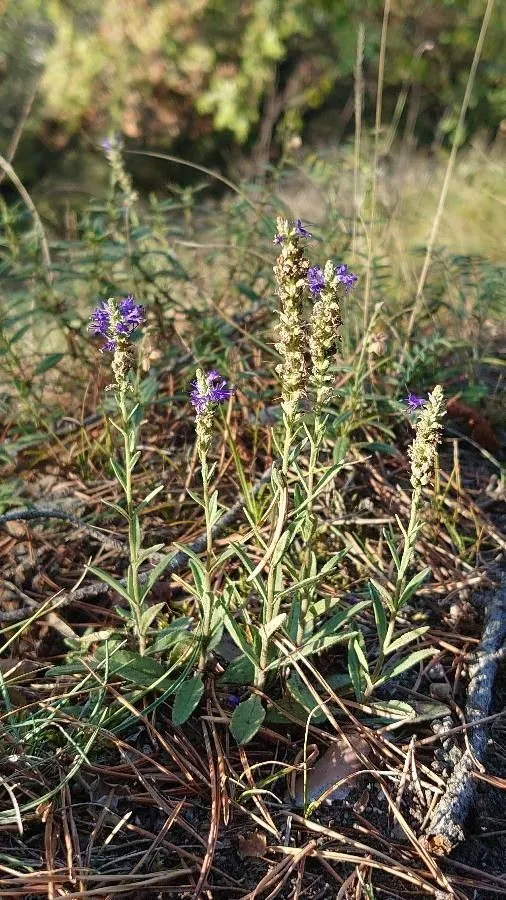
Author: L.
Bibliography: Sp. Pl.: 10 (1753)
Year: 1753
Status: accepted
Rank: species
Genus: Veronica
Vegetable: False
Observations: Europe to C. Siberia and NW. Xinjiang
Spiked speedwell, botanically recognized as Veronica spicata, is a charming perennial herb that boasts a broad native range extending from Europe to Central Siberia and Northwestern Xinjiang. First categorized by the renowned botanist Carl Linnaeus in his seminal work “Species Plantarum” published in 1753, this species has captivated botanists and garden enthusiasts alike for centuries.
Belonging to the Plantaginaceae family, Veronica spicata thrives in a variety of habitats, from the rolling meadows of Europe to the rugged terrains of C. Siberia. Its resilient nature and adaptability have made it a popular choice for ornamental gardens and natural landscaping projects.
Spiked speedwell is distinguished by its striking spiked inflorescences, which typically bloom in hues of blue, purple, pink, or white. These vibrant flower spikes emerge from dense mats of lanceolate leaves, creating a visually appealing contrast that can enliven any garden setting. This perennial herb not only enhances aesthetic appeal but also attracts a plethora of pollinators, including bees and butterflies, contributing to the ecological well-being of its environment.
Despite its delicate appearance, Veronica spicata is renowned for its hardiness. It can endure varying climate conditions and often thrives in sunny locations with well-drained soil. Gardeners appreciate its low-maintenance requirements and its ability to rebloom with minimal care.
In summary, spiked speedwell, or Veronica spicata, is a versatile and resilient perennial that has earned its place in both wild and cultivated landscapes. Its striking floral spikes and ease of care make it a favorite among gardeners and an asset to natural ecosystems across its extensive native range.
Dan: aks-ærenpris
Eng: spiked speedwell, breckland spiked speedwell, spiked speedwell agg.
Nob: aksveronika
Nno: aksveronika
Swe: axveronika, tähkätädyke
Nor: sørlesme, topflesme
Fin: tähkätädyke
Deu: ähriger ehrenpreis
Nld: aarereprijs
Fra: véronique en épi
Cym: rhwyddlwyn pigfain, rhwyddlwyn pigog, rhwyddlwyni pigfain
En: Spiked speedwell, Breckland Spiked Speedwell, Spiked Speedwell agg.
Da: Aks-ærenpris
Nl: Aarereprijs
Fi: Tähkätädyke
Fr: Véronique en épi
De: Ähriger Ehrenpreis, Ähriger Blauweiderich, Kerzenveronika
It: Veronica spicata
No: Sørlesme, Topflesme
Nb: Aksveronika
Nn: Aksveronika
Pt-br: Verônica-de-espiga
Sv: Axveronika, Tähkätädyke
Cy: Rhwyddlwyn Pigfain, Rhwyddlwyn Pigog, Rhwyddlwyni Pigfain
Taken Sep 30, 2021 by Manu_ (cc-by-sa)
Taken Jun 18, 2017 by Yoan MARTIN (cc-by-sa)
Taken Jul 15, 2021 by Jani Zadrgal (cc-by-sa)
Taken Aug 12, 2021 by Jacques Zuber (cc-by-sa)
Taken Jun 30, 2021 by Jacques Zuber (cc-by-sa)
Taken Jun 30, 2021 by Jacques Zuber (cc-by-sa)
Taken Aug 29, 2018 by Pierre HENO (cc-by-sa)
Taken Sep 14, 2019 by Abdul Aziz Pandin (cc-by-sa)
Taken Sep 25, 2020 by Dorothee Rugevics (cc-by-sa)
Taken Jan 27, 2022 by Annemarie Ahrens-Stehle (cc-by-sa)
Taken Jun 18, 2017 by Yoan MARTIN (cc-by-sa)
Taken Aug 23, 2020 by k sch (cc-by-sa)
Taken Sep 17, 2021 by claude lerat -gentet Mme (cc-by-sa)
Taken Jun 30, 2021 by Jacques Zuber (cc-by-sa)
Taken Sep 25, 2020 by Dorothee Rugevics (cc-by-sa)
© copyright of the Board of Trustees of the Royal Botanic Gardens, Kew.
© copyright of the Board of Trustees of the Royal Botanic Gardens, Kew.
© copyright of the Board of Trustees of the Royal Botanic Gardens, Kew.
Taken Oct 24, 2022 by Fabrice Rubio (cc-by-sa)
Taken Jul 22, 2020 by Cristian Zanella Cristian Zanella (cc-by-sa)
Taken Aug 18, 2021 by Bryan Sarauer (cc-by-sa)
Taken Jun 18, 2017 by Yoan MARTIN (cc-by-sa)
Taken Jun 27, 2022 by Tristan Jaton-Maria (cc-by-sa)
Taken Jul 28, 2022 by Robyn x (cc-by-sa)
Taken Jan 1, 1970 by Photoflora – L’Abbé COSTE (©)
Taken Oct 26, 2013 by Tela Botanica − Liliane Roubaudi (cc-by-sa)
Taken Jul 11, 2019 by Lex Wunderink (cc-by-sa)
Taken Feb 8, 2022 by Annemarie Ahrens-Stehle (cc-by-sa)
Taken Jul 19, 2022 by Thomas Sprütten (cc-by-sa)
Taken Jul 17, 2022 by selber pflanzen (cc-by-sa)
Taken Jul 19, 2020 by elodie le be (cc-by-sa)
Taken Jun 24, 2019 by Marie Bourret (cc-by-sa)
Taken Jun 26, 2022 by Else Nolden (cc-by-sa)
Growth habit: Forb/herb
Family: Myrtaceae Author: (F.Muell.) K.D.Hill & L.A.S.Johnson Bibliography: Telopea 6: 402 (1995) Year: 1995 Status:…
Family: Rubiaceae Author: Pierre ex A.Froehner Bibliography: Notizbl. Bot. Gart. Berlin-Dahlem 1: 237 (1897) Year:…
Family: Sapindaceae Author: Koidz. Bibliography: J. Coll. Sci. Imp. Univ. Tokyo 32(1): 38 (1911) Year:…
Family: Asteraceae Author: A.Gray Bibliography: Pacif. Railr. Rep.: 107 (1857) Year: 1857 Status: accepted Rank:…
Family: Fabaceae Author: Medik. Bibliography: Vorles. Churpfälz. Phys.-Ökon. Ges. 2: 398 (1787) Year: 1787 Status:…
Family: Aspleniaceae Author: (Cav.) Alston Bibliography: Bull. Misc. Inform. Kew 1932: 309 (1932) Year: 1932…